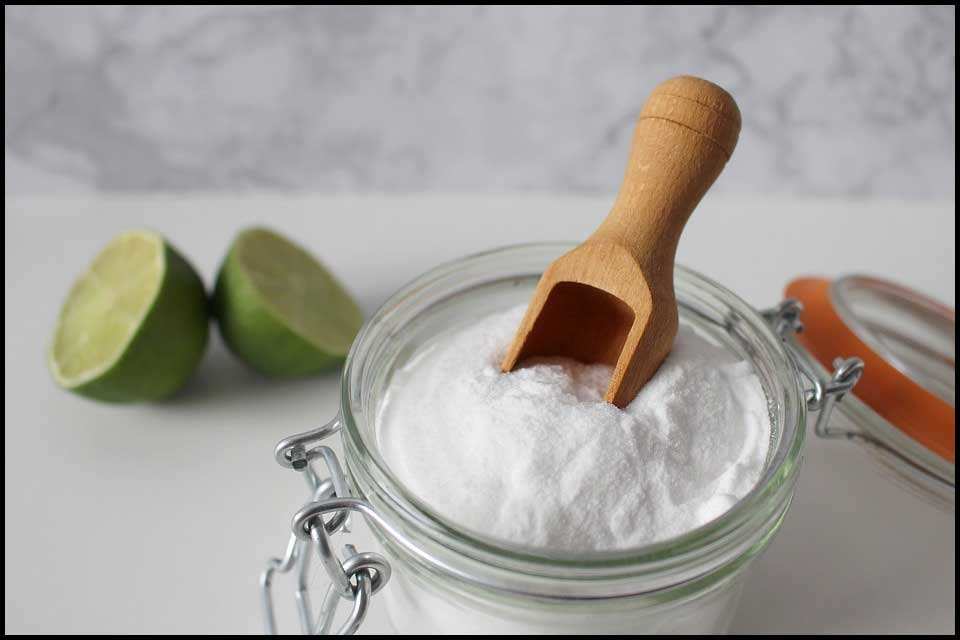Overview
Baking soda baths are an inexpensive, safe, and oftentimes, effective way to care for your skin and treat health concerns.
Baking soda baths are different from Epsom salt baths, which are used to treat different conditions. Baking soda baths are more commonly used for skin concerns while Epsom salt baths treat issues such as circulatory health, blood pressure, and nerve function. Some bath recipes call for the combination of baking soda and Epsom salt.
Continue reading to learn how you can use baking soda baths to boost your health.
How To
Always drink plenty of water before taking a baking soda bath. Consider creating a relaxing atmosphere using candles, soft lights, and soothing music to help you relax while you bathe. You may wish to dry brush your skin beforehand. For the bath:
- Add between 5 tablespoons to 2 cups of baking soda to the bath. The amount depends on the condition you wish to treat.
- Swish it around to make sure it dissolves well.
- Soak in the bathtub for 10 to 40 minutes.
It’s recommended that you rinse with fresh water after your bath. This helps to get rid of toxins and residue. You can use a washcloth or loofah to exfoliate and remove dead skin cells.
The water should be comfortably warm, but not too hot. This helps to prevent burning, fainting, and feeling lightheaded. Hot water can also remove moisture from your skin. Using lukewarm water will help your skin to absorb moisture. If you feel too hot at any point you can add more cool water until it’s an ideal temperature.
After your bath:
- towel dry
- moisturize
- drink water
Move slowly and sit down if you feel weak, drained, or lightheaded afterward.
What Conditions Can A Baking Soda Bath Help Treat?
Taking a warm bath can help you to relax and unwind. Baths also help to:
- relieve tension and pain
- promote perspiration
- boost circulation
- encourage healing
Adding baking soda to your bath may have additional benefits, many of which are skin-related. Some of these uses are described below:
Yeast Infections
Baking soda baths can soothe and relieve yeast infection symptoms such as:
- itching
- burning
- swelling
Baking soda may also have a positive effect on vaginal pH.
A 2014 study found that baking soda killed Candida cells that lead to yeast infections. Baking soda has also been found to have general antifungal effects.
Diaper Rash
If your baby has raw skin from a diaper rash, you can soak the affected area in a baking soda bath three times per day. Do this for only 10 minutes at a time. The baking soda may help soothe the raw skin and promote faster healing. Make sure you pat the area dry completely before putting on a new, clean diaper.
Use only 2 tablespoons of baking soda for babies and young children. Don’t use too much, as baking soda can be absorbed into the body through the skin in a process called alkalosis.
Eczema
A baking soda bath can help to soothe and heal eczema. Add 1/4 cup of baking soda to your bath to relieve itching. It’s important that you moisturize your skin immediately after your bath while your skin is still damp.
You should also avoid scrubbing your skin with a towel to dry it. That can irritate the skin. Instead, use your towel to gently pat your skin dry.
Poison Ivy And Poison Oak
Bathing helps to limit further contamination of yourself and others if you have poison ivy or poison oak rash. You should also bathe as soon as possible after exposure. This helps to prevent the oils from soaking into your skin and causing a rash.
A baking soda bath can help to reduce itching and irritation.
- Dissolve 1/2 a cup of baking soda in a tub of warm water.
- Soak for up to 30 minutes.
Psoriasis
Medicated baths are often one of the first lines of treatment for psoriasis. Research from 2005 supports the use of baking soda baths to treat psoriasis. Baking soda baths were shown to have a beneficial effect on psoriasis including promoting less itchiness and irritation. You can also take an oatmeal bath for psoriasis.
Detox Bath
Baking soda has cleansing and detoxifying properties that may help to purify your body and boost immunity. It can be combined with Epsom salt, sea salt, and ground ginger to make a detox bath. You can also add essential oils and other natural ingredients of your choice.
Chickenpox
Baking soda baths can be used three times per day to relieve itching caused by chickenpox.
- Use 1 cup of baking soda for every inch deep of lukewarm water.
- Allow you or your child to soak for 15 to 20 minutes.
Urinary Tract Infections (UTI’s)
Soaking in a baking soda bath may help to neutralize the acid in your urine, remove germs, and aid in healing. It may also relieve painful urination.
- Add 1/4 cup of baking soda to the bath.
- Soak for up to 30 minutes, or 10 to 15 minutes in young children.
- Do this twice per day.
Vulvar Vestibulitis
Soaking in a baking soda bath may help to soothe vulvar itching and burning.
- Add 4 to 5 tablespoons of baking soda to a lukewarm bath.
- Soak up to three times a day for 15 minutes.
Constipation
Taking a baking soda bath may help to relieve rectal pain caused by constipation. It can also help you to relax your anal sphincter and have a bowel movement.
- Add 2 ounces of baking soda to your bath.
- Soak for 20 minutes.
Safety
Generally, baking soda baths are well-tolerated by most people.
Do not take a baking soda bath if you:
- are pregnant or breastfeeding
- have high blood pressure
- have diabetes
- are under the influence of drugs or alcohol
- have any open wounds or serious infections
- are prone to fainting
Always do a skin patch test before using baking soda on your skin. Apply a baking soda paste to the inside of your inner forearm. Rinse it off and then wait 24 hours before taking a baking soda bath to see if any reaction occurs. If you’re making a detox bath and are adding essential oils, you should do a skin patch test for these as well.
Talk to your child’s pediatrician before using baking soda baths for babies. It’s usually safe as long as you use only a small amount of baking soda and limit their time spent in the bath. There has been at least one reported case from 1981 of a baby getting hypokalemic metabolic alkalosis by absorbing baking soda through the skin.
Takeaway
Talk to your doctor before starting any new treatment. Discuss your treatment plan as well as the conditions you wish to treat. Pay attention to your body and note how your symptoms react to the baths.
Discontinue use if you have any adverse reactions. If your condition doesn’t improve after a few days you should seek medical treatment.
Sources:
1. Chickenpox. (n.d.).
nationwidechildrens.org/gd/applications/heh/pdf/HH-I-101.pdf
2. Constipation. (n.d.).
elcaminohospital.org/library/constipation-2
3. Eczema and bathing. (n.d.)
nationaleczema.org/eczema/treatment/bathing/
4. Gonzalez J, et al. (1981). Metabolic alkalosis secondary to baking soda treatment of a diaper rash.
ncbi.nlm.nih.gov/pubmed/7232046
5. Lastauskienė E, et al. (2014). Formic acid and acetic acid induce a programmed cell death in pathogenic Candida species. DOI:
doi.org/10.1007/s00284-014-0585-9
6. Letscher-Bru V, et al. (2013). Antifungal activity of sodium bicarbonate against fungal agents causing superficial infections. DOI:
doi.org/10.1007/s11046-012-9583-2
7. Mayo Clinic Staff. (2017). Atopic dermatitis (eczema).
mayoclinic.org/diseases-conditions/atopic-dermatitis-eczema/diagnosis-treatment/drc-20353279
8. TieF T. (2011). Detoxifying with essential oils.
naha.org/naha-blog/detoxifying-with-essential-oils/
9. Urinary tract infection – female. (n.d.).
healthychildren.org/English/tips-tools/symptom-checker/Pages/symptomviewer.aspx?symptom=Urinary+Tract+Infection+-+Female
10. Urinary tract infections (UTIs). (2013).
pamf.org/youngadults/sex/uti/
11. Verdolini R, et al. (2005). Old fashioned sodium bicarbonate baths for the treatment of psoriasis in the era of futuristic biologics: An old ally to be rescued. DOI:
dx.doi.org/10.1080/09546630410024862
12. Vulvar vestibulitis. (n.d.).
uihc.org/health-library/vulvar-vestibulitis
Important Notice: This article was originally published at www.healthline.com by Emily Cronkleton where all credits are due. Medically reviewed by Debra Rose Wilson, Ph.D., MSN, R.N., IBCLC, AHN-BC, CHT.
Disclaimer
The watching, interacting, and participation of any kind with anything on this page does not constitute or initiate a doctor-patient relationship with Dr. Farrah®. None of the statements here have been evaluated by the Food and Drug Administration (FDA). The products of Dr. Farrah® are not intended to diagnose, treat, cure, or prevent any disease. The information being provided should only be considered for education and entertainment purposes only. If you feel that anything you see or hear may be of value to you on this page or on any other medium of any kind associated with, showing, or quoting anything relating to Dr. Farrah® in any way at any time, you are encouraged to and agree to consult with a licensed healthcare professional in your area to discuss it. If you feel that you’re having a healthcare emergency, seek medical attention immediately. The views expressed here are simply either the views and opinions of Dr. Farrah® or others appearing and are protected under the first amendment.
Dr. Farrah® is a highly experienced Licensed Medical Doctor certified in evidence-based clinical nutrition, not some enthusiast, formulator, or medium promoting the wild and unrestrained use of nutrition products for health issues without clinical experience and scientific evidence of therapeutic benefit. Dr. Farrah® has personally and keenly studied everything she recommends, and more importantly, she’s closely observed the reactions and results in a clinical setting countless times over the course of her career involving the treatment of over 150,000 patients.
Dr. Farrah® promotes evidence-based natural approaches to health, which means integrating her individual scientific and clinical expertise with the best available external clinical evidence from systematic research. By individual clinical expertise, I refer to the proficiency and judgment that individual clinicians acquire through clinical experience and clinical practice.
Dr. Farrah® does not make any representation or warranties with respect to the accuracy, applicability, fitness, or completeness of any multimedia content provided. Dr. Farrah® does not warrant the performance, effectiveness, or applicability of any sites listed, linked, or referenced to, in, or by any multimedia content.
To be clear, the multimedia content is not intended to be a substitute for professional medical advice, diagnosis, or treatment. Always seek the advice of your physician or other qualified health providers with any questions you may have regarding a medical condition. Never disregard professional medical advice or delay in seeking it because of something you have read or seen in any website, video, image, or media of any kind. Dr. Farrah® hereby disclaims any and all liability to any party for any direct, indirect, implied, punitive, special, incidental, or other consequential damages arising directly or indirectly from any use of the content, which is provided as is, and without warranties.









